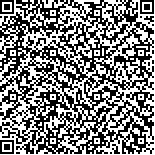下载中心
优秀审稿专家
优秀论文
相关链接
摘要

作为定量描述地表异质性和时空分布规律的主要方法,遥感需要与模型相结合,才能对陆表蒸散进行估算。 ETWatch是面向流域规划与管理和农业水管理的实用需求,针对遥感应用而设计的遥感蒸散监测系统,可用于计算流域 地表净辐射、感热、潜热(ET)的空间分布及其时间过程,提高ETWatch模型的精度和可靠性的关键在于发展多源遥感数 据的参数化方法。本文在调研国内外研究进展的基础上,总结了流域蒸散遥感估算参数化中存在的主要问题,包括非均 匀下垫面参数获取、时空尺度转换、多源遥感数据集成、真实性检验与模型校正等,并结合上述问题介绍了ETWatch中 的模型与方法。
Evapotranspiration (ET) is not only an important part of the coupled Eco-Hydrological processes, but also primary way of eco-agricultural consumption. A better description of the temporal-spatial pattern of a watershed greatly will enhance people’s understanding of hydrological processes and the water management approach. As quantitative measurement of surface heterogeneity, remote sensing and surface observations are combined to develop operational methods and determine eco-hydrological variables. ETWatch is such an operational platform which is designed for practical needs of watershed planning and agricultural water management using remote sensing techniques that can describe the spatial distribution and time process of surface net radiation, sensible heat, and latent heat (ET). The reviewing of algorithms and approaches show that the parametric approach is the core component to improve the accuracy of ET estimation at regional scale and apply remote sensed ET for practical goals. The other bottlenecks include scaling, multi-source data integration and validation of modeling. Potential approaches used in ETWatch to the above issues are summarized and commented.

